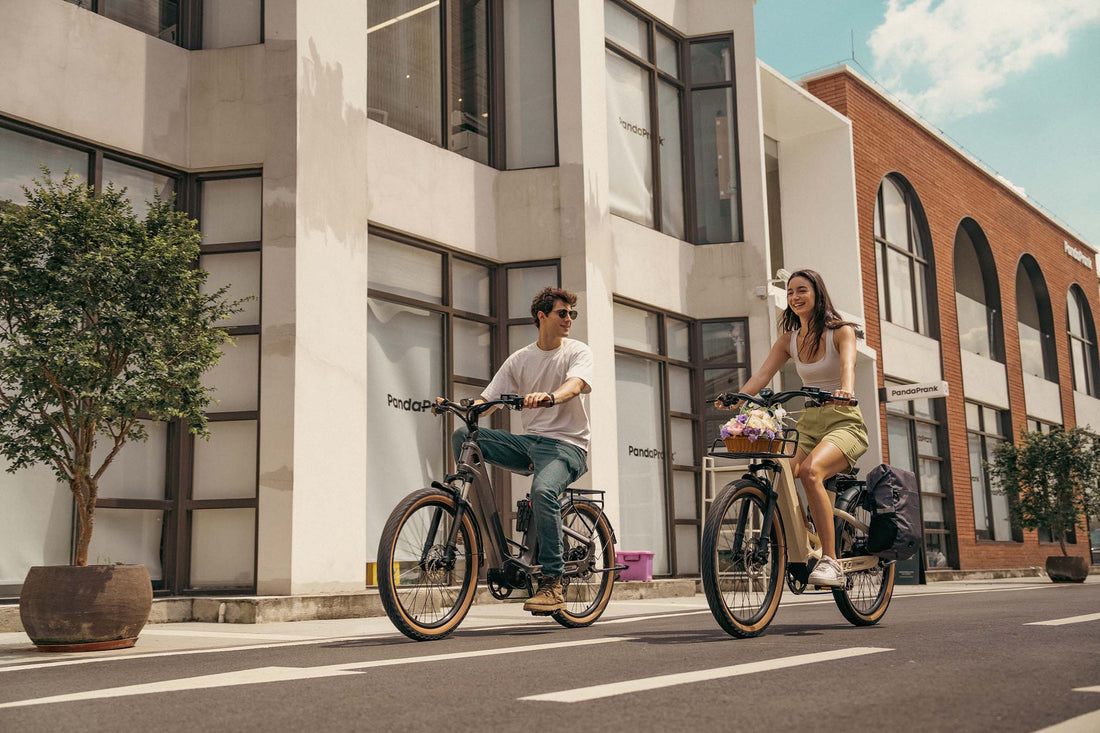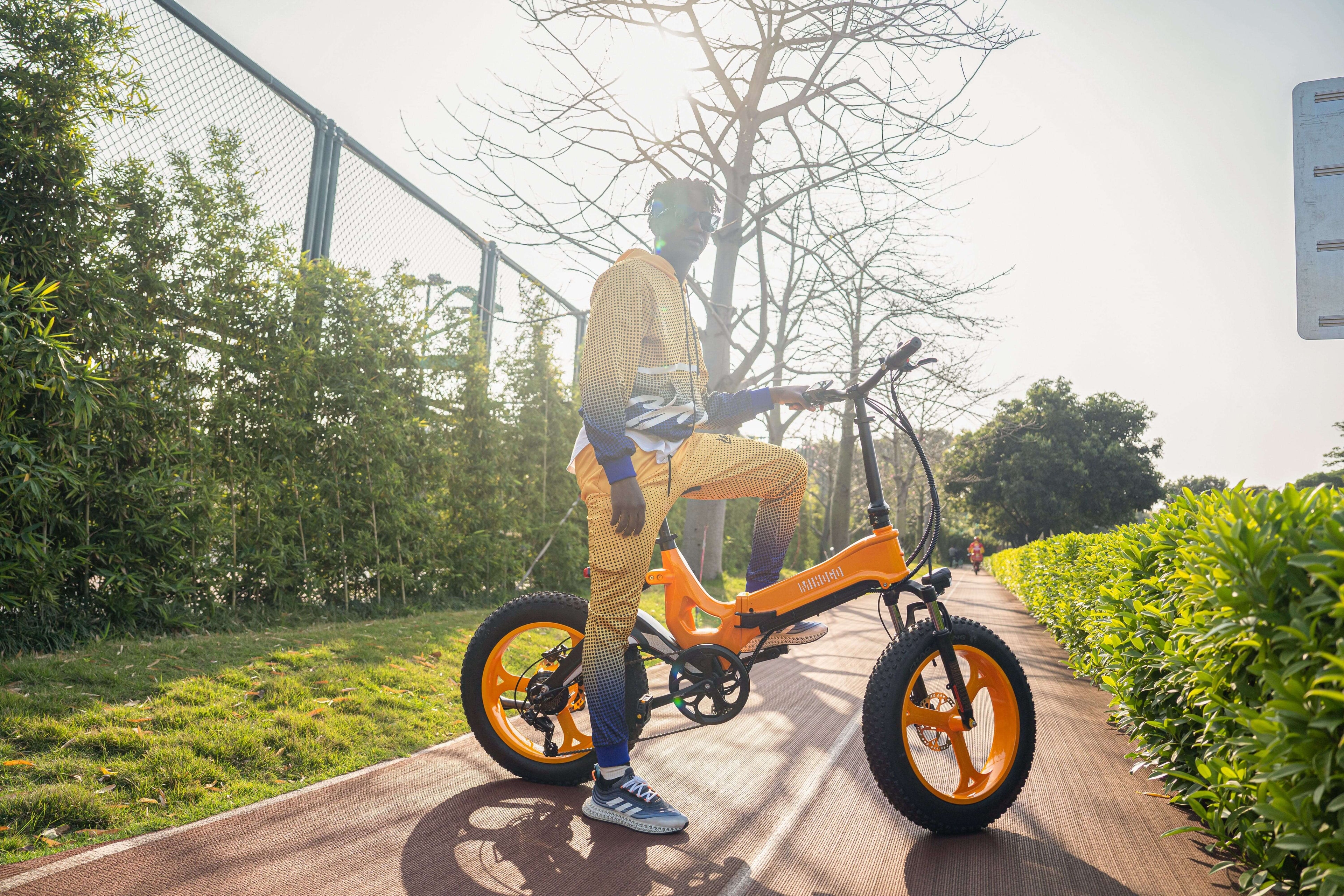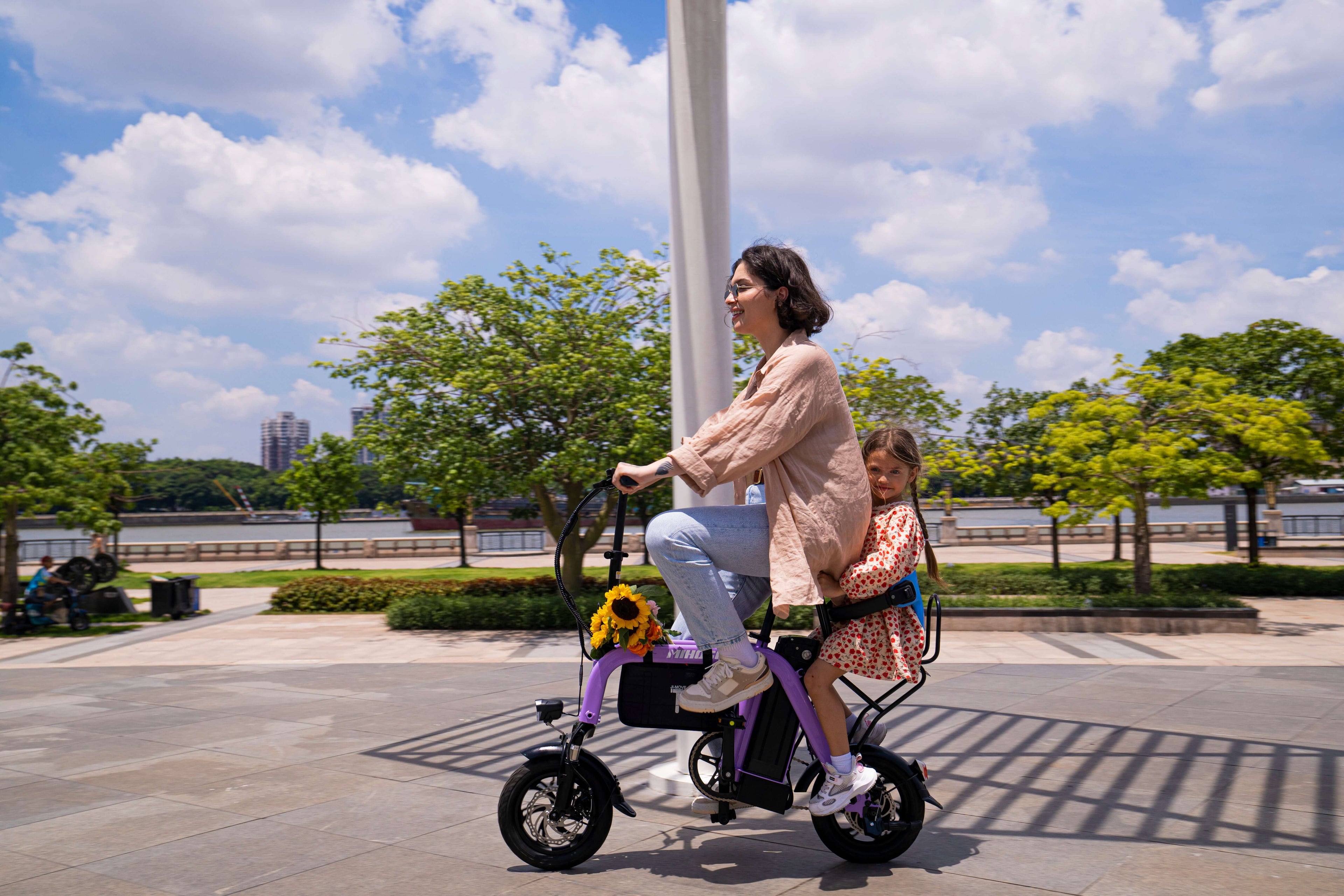The question "Can e-bikes get wet?" is one of the most common concerns among electric bike enthusiasts. Whether you're caught in an unexpected downpour, navigating through puddles, or simply want to wash your Mihogo e-bike, understanding water resistance is crucial for protecting your investment and ensuring safe riding experiences.
The short answer is yes – most modern e-bikes, including Mihogo models, can handle moisture to varying degrees. However, electric bikes are water-resistant, not fully waterproof. This critical distinction determines how confidently you can ride in wet conditions and what maintenance practices will keep your e-bike performing optimally for years to come.
Understanding Water Resistance vs. Waterproof Technology
The Critical Difference Between Water-Resistant and Waterproof
Most e-bikes are water-resistant rather than waterproof, meaning you can't fully submerge them in water or ride them in heavy rain. Understanding this difference is essential for e-bike safety and longevity.
Water-Resistant E-bikes:
- Handle light to moderate rain
- Withstand splashes and spray
- Protected against moisture during normal riding
- Require careful maintenance after wet exposure
Waterproof E-bikes:
- Can survive temporary submersion (rare in consumer models)
- Handle heavy downpours with confidence
- Require minimal post-rain maintenance
- Command premium pricing due to advanced engineering
How Water Affects E-Bike Components
Water affects e-bikes in various ways, but most critically, it can damage electrical components like the motor and battery. Each major component interacts differently with moisture:
Battery Systems: The most expensive and sensitive component, vulnerable to water intrusion through charging ports, seams, or damaged seals.
Motors: Generally well-sealed but can suffer long-term damage from sustained moisture exposure.
Display and Controls: More susceptible to water damage than motors, especially touchscreen displays.
Wiring and Connections: Protected by insulation but vulnerable to corrosion over time if water penetrates connectors.
IP Rating System: Your Guide to E-Bike Water Protection
Understanding IP Ratings for E-Bikes
The IP code indicates how well a device is protected against water and dust, defined by the International Electrotechnical Commission (IEC) under international standard IEC 60529. For e-bikes, these ratings provide crucial information about weather riding capabilities.
Common E-Bike IP Ratings:
IPX4: Basic Water Resistance
- Protection against water splashes from any direction
- Suitable for light rain and normal road spray
- Most entry-level e-bikes feature this rating
- Adequate for fair-weather commuting
IPX5: Enhanced Protection
- Protection against water jets from any direction
- Handles moderate rain and wet road conditions
- Good for regular commuters in variable climates
IPX6: Superior Weather Resistance
- Can handle powerful water jets from any direction, withstanding heavy rain without electrical system damage
- For most e-bike users, an IPX6 rating is considered ideal
- Excellent for all-weather riding and outdoor storage
IPX7: Premium Waterproof Performance
- Protection against temporary water immersion (up to 1 meter for 30 minutes)
- Rare in consumer e-bikes due to cost and complexity
- Ultimate protection for extreme conditions
Mihogo E-Bike Models: Water Resistance Analysis
Mihogo Air750 Max - Advanced Weather Protection
Best for: All-weather mountain and trail riding
- Motor Power: 750W (robust sealing for powerful components)
- Frame Type: Carbon fiber (naturally corrosion-resistant)
- Range: 121 miles (sufficient power for extended wet weather rides)
- Water Resistance Applications: Ideal for riders who encounter variable weather on long-distance rides and mountain trails
The Air750 Max's carbon fiber construction provides inherent moisture resistance, while the powerful 750W motor typically features enhanced sealing to protect high-performance components. This model suits riders who need reliability in challenging weather conditions.
MIHOGO ONE Utility EBIKE - All-Weather Workhorse
Best for: Cargo hauling in variable weather conditions
- Motor Power: 750W (professional-grade sealing)
- Range: 167 miles (extended wet weather capability)
- Frame Type: Utility design (built for durability)
- Water Resistance Applications: Perfect for delivery riders, commuters with cargo needs, and outdoor workers
The utility design emphasizes durability and weather resistance, making this model excellent for riders who can't let weather stop their work or transportation needs.
MIHOGO RX 2.4 - Urban Weather Commuter
Best for: City riding with occasional rain exposure
- Motor Power: 500W (adequate sealing for urban environments)
- Frame Type: Folding design (convenient for indoor storage)
- Range: 40 miles (sufficient for daily commuting)
- Water Resistance Applications: Ideal for urban commuters who primarily ride in protected environments but need occasional wet weather capability
The folding design allows easy indoor storage during severe weather, while the moderate power system typically features reliable water resistance for urban splashing and light rain.
Mihogo Mini - Light Weather Protection
Best for: Fair weather riding with basic splash protection
- Motor Power: 350W (basic sealing appropriate for power level)
- Frame Type: Compact design (easy indoor storage)
- Range: 62 miles (adequate for recreational riding)
- Water Resistance Applications: Best suited for riders who avoid heavy rain but need protection from road spray and light moisture
The Mini's compact design and lower power requirements allow for effective basic water resistance while maintaining affordability and portability.
Practical Water Resistance Guidelines for Mihogo Owners
Safe Riding Conditions by IP Rating
IPX4 (Basic Protection) - Suitable for:
- Light drizzle and mist
- Occasional puddle splashing
- Normal road spray
- Brief exposure to rain
IPX5 (Moderate Protection) - Handles:
- Steady light rain
- Wet road cycling
- Moderate puddles
- Light pressure washing
IPX6 (Advanced Protection) - Withstands:
- Heavy rain and downpours
- Deep puddle crossing
- High-pressure road spray
- Regular outdoor storage
Riding Techniques for Wet Conditions
Pre-Ride Preparation:
- Check all electrical connections for moisture
- Ensure battery charging port covers are secure
- Verify display protection is in place
- Test brakes and lights functionality
During Wet Rides:
- Reduce speed on slippery surfaces
- Increase following distances
- Avoid deep puddles that could splash onto electrical components
- Use lights for visibility even during daylight hours
Post-Ride Care:
- Wipe down electrical components
- Dry the bike frame and components
- Store in a dry location when possible
- Charge the battery only after ensuring dry conditions
Maintenance and Protection Strategies
Enhancing Your Mihogo's Water Resistance
Protective Accessories:
- Battery covers: Shield charging ports and connections
- Display protectors: Prevent moisture intrusion into control systems
- Fenders and mudguards: Reduce spray reaching electrical components
- Cable guides and seals: Protect wiring from water exposure
Regular Maintenance:
- Inspect regularly for signs of wear and tear, especially in areas that could be damaged by water
- Lubricate moving parts with water-resistant lubricants
- Check seals and gaskets around electrical components
- Clean and dry after wet rides to prevent corrosion
Emergency Water Exposure Procedures
If Your Mihogo Gets Soaked:
- Power down immediately - turn off all electrical systems
- Remove the battery if possible and accessible
- Dry thoroughly - use absorbent cloths on all surfaces
- Allow complete drying - wait 24-48 hours before powering on
- Professional inspection - consider service if extensive water exposure occurred
Weather-Specific Riding Recommendations
Rain Riding Strategy
Light Rain (IPX4+ Required):
- All Mihogo models can handle brief light rain exposure
- Focus on visibility and traction rather than water protection
- Plan shorter rides to minimize exposure time
Moderate Rain (IPX5+ Recommended):
- Air750 Max and ONE Utility models preferred
- Use protective accessories for extended exposure
- Monitor electrical system performance throughout ride
Heavy Rain (IPX6+ Essential):
- Only attempt with highest-rated models and full protection
- Consider postponing non-essential rides
- Ensure emergency shelter options along route
Seasonal Considerations
Spring/Fall:
- Increased puddle risks from seasonal storms
- Temperature variations affect battery performance
- Regular maintenance crucial due to variable conditions
Summer:
- Afternoon thunderstorms require quick shelter planning
- Heat combined with humidity challenges electrical systems
- UV protection becomes important alongside water resistance
Winter:
- Snow and ice present unique electrical challenges
- Salt and road chemicals accelerate corrosion
- Battery performance decreases in cold, wet conditions
Advanced Water Protection Technologies
Current Industry Standards
Most premium electric bikes feature IPX6 ratings or higher, providing excellent protection for daily riding in various weather conditions. Understanding these standards helps you evaluate your Mihogo model's capabilities and plan appropriate usage.
Emerging Technologies:
- Sealed connector systems prevent water intrusion
- Hydrophobic nano-coatings repel moisture
- Advanced gasket systems create multiple protection barriers
- Smart moisture detection alerts users to potential water damage
Future-Proofing Your Investment
Upgrade Considerations:
- Aftermarket sealing solutions for older models
- Professional waterproofing services for enhanced protection
- Component replacement with higher-rated alternatives
- Insurance considerations for water damage protection
Legal and Safety Considerations
Understanding Liability and Warranty Coverage
Most e-bike warranties have specific exclusions for water damage, making understanding and respecting IP ratings crucial for maintaining coverage. International standards like IEC 60529 provide the framework for these ratings, ensuring consistent global protection classifications.
Important Warranty Considerations:
- Water damage often voids standard warranties
- Proper maintenance documentation may be required
- Understanding your model's specific IP rating prevents accidental misuse
- Professional service records demonstrate proper care
Safety Regulations and Standards
E-bike water resistance falls under broader electrical safety standards that vary by region. Understanding these requirements ensures your Mihogo model meets local safety standards while providing optimal protection.
Cost-Benefit Analysis of Water Resistance
Investment Protection Strategy
Basic Protection (IPX4):
- Lower initial cost
- Adequate for controlled environments
- Requires more careful usage planning
- Suitable for recreational riders
Advanced Protection (IPX6+):
- Higher initial investment
- Greater usage flexibility
- Reduced maintenance costs
- Essential for professional/daily use
Long-Term Value Considerations
Water-resistant electric bikes demonstrate superior longevity compared to non-protected models, with sealed components resisting corrosion and ensuring reliable performance for years. This enhanced durability often justifies higher initial costs through reduced replacement and repair expenses.
For comprehensive guidance on selecting the right e-bike for your climate, explore our detailed Mihogo model comparison guide covering all terrain and weather applications.
Discover advanced riding techniques for challenging conditions in our weather riding safety guide covering everything from rain protocols to winter storage.
Conclusion: Making Informed Decisions About E-Bike Water Resistance
Understanding water resistance is fundamental to maximizing your Mihogo e-bike's performance, safety, and longevity. While no consumer e-bike is truly "waterproof," proper knowledge of IP ratings, component protection, and maintenance practices enables confident riding in various weather conditions.
Key Takeaways:
- Know your IP rating - understand your specific model's capabilities and limitations
- Choose appropriately - match your Mihogo model to your expected riding conditions
- Maintain consistently - regular care preserves water resistance and prevents damage
- Ride responsibly - respect weather limitations and prioritize safety over convenience
Whether you're navigating urban puddles with the RX 2.4 or tackling mountain trails in variable weather with the Air750 Max, understanding water resistance empowers you to make the most of your Mihogo e-bike investment.
The future of e-bike technology continues advancing toward better weather protection, but today's Mihogo models already provide excellent capabilities for riders who understand and respect their specifications. By combining proper model selection, appropriate accessories, and conscientious maintenance, you can enjoy reliable, weather-resistant transportation that enhances rather than limits your riding adventures.
Remember: The goal isn't to eliminate all weather-related risks, but to understand and manage them effectively. With proper knowledge and preparation, your Mihogo e-bike can provide dependable transportation through most weather conditions while protecting your investment for years of reliable service.








